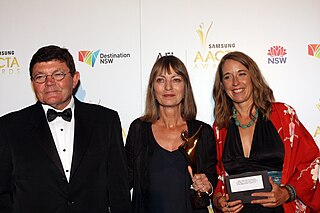Related Research Articles

Pandanus is a genus of monocots with some 578 accepted species. They are palm-like, dioecious trees and shrubs native to the Old World tropics and subtropics. The greatest number of species are found in Madagascar and Malaysia. Common names include pandan, screw palm and screw pine. They are classified in the order Pandanales, family Pandanaceae.
Kobon is a language of Papua New Guinea. It has somewhere around 90–120 verbs.

Southern Highlands is a province in Papua New Guinea. Its provincial capital is the town of Mendi. According to Papua New Guinea's national 2011 census, the total population of Southern Highlands is 515,511 spread across 15,089 square kilometers (5,826 sq mi).

Huli is a Tari language spoken by the Huli people of the Hela Province of Papua New Guinea. It has a pentadecimal (base-15) numeral system: ngui means 15, ngui ki means 15×2 = 30, and ngui ngui means 15×15 = 225.
Kaugel (Gawigl) is one of the languages spoken in the Southern Highlands province of Papua New Guinea. Native speakers call the area on the Southern Highlands side of the Kaugel River from the Western Highlands province home.
The squirrel-toothed rat, also known as the New Guinea giant rat, powerful-toothed rat, uneven-toothed rat, or narrow-toothed giant rat, is a species of rodent in the family Muridae. It is the only species in the genus Anisomys and is found in New Guinea.
The eastern white-eared giant rat is a species of rodent in the family Muridae. It is found only in Papua New Guinea.
Rothschild's woolly rat is a species of rodent in the family Muridae. It is found on the island of New Guinea: both in the West Papua region of Indonesia and Papua New Guinea.
The giant naked-tailed rat is a species of rodent in the family Muridae. It is found in West Papua, Indonesia and Papua New Guinea. It lives in tropical forests, wetlands, and in degraded forests.

The Chimbu–Wahgi languages are a language family sometimes included in the Trans–New Guinea proposal.
The Wiru are a people of the Southern Highlands Province of Papua New Guinea. They speak the Wiru language. Among their rituals is the production of timbuwarra out of rattan.

Wiru or Witu is the language spoken by the Wiru people of Ialibu-Pangia District of the Southern Highlands Province of Papua New Guinea. The language has been described by Harland Kerr, a missionary who lived in the Wiru community for many years. Kerr's work with the community produced a Wiru Bible translation and several unpublished dictionary manuscripts, as well as Kerr's Master's thesis on the structure of Wiru verbs.
Wahgi is a Trans–New Guinea language of the Chimbu–Wahgi branch spoken by approximately 100,000 people in the highlands of Papua New Guinea. Like other Chimbu languages, Wahgi has some unusual lateral consonants.
Angal, or Mendi, is an Engan language complex of the Southern Highlands province of Papua New Guinea.
Kewa is an Engan language complex of the Southern Highlands province of Papua New Guinea. A dictionary of the western dialect of Kewa has been compiled by Franklin & Franklin (1978).

Bob Connolly is an Australian film director, cinematographer and author. He is best known for his documentaries produced over the past 30 years, including The Highlands Trilogy and Rats in the Ranks. More recent films include Facing the Music (2001) and Mrs Carey's Concert (2011). His films have won an Academy Award nomination, AFI Awards, and Grand Prix at the Cinéma du Réel Festival.

A pandanus language is an elaborate avoidance language among several of the peoples of the eastern New Guinea Highlands, used when collecting Pandanus nuts.
Black Harvest is a 1992 Australian-Papua New Guinea documentary directed by Australians Bob Connolly and Robin Anderson. It is the third film in 'The Highlands Trilogy', concluding the series which includes the 1983 film First Contact and the 1989 film Joe Leahy's Neighbours.

The karuka is a species of tree in the screwpine family (Pandanaceae) and an important regional food crop in New Guinea. The nuts are more nutritious than coconuts, and are so popular that villagers in the highlands will move their entire households closer to trees for the harvest season.
Andrew Jamieson Strathern is a British anthropologist.
References
- ↑ Melpa at Ethnologue (18th ed., 2015) (subscription required)
- ↑ Franklin, Karl J. (September 1972). "A Ritual Pandanus Language of New Guinea". Oceania. 43 (1): 66–76. doi:10.1002/j.1834-4461.1972.tb01197.x. OCLC 883021898.
- ↑ Stewart, Pamela J., Andrew Strathern and Jürgen Trantow. 2011. Melpa-German-English Dictionary. Pittsburgh: University Library System.
- ↑ Connolly, Bob (14 February 2017). "Filmmaker Bob Connolly returns to PNG 25 years after 'Black Harvest'". The Australian Financial Review . Retrieved 25 January 2017.